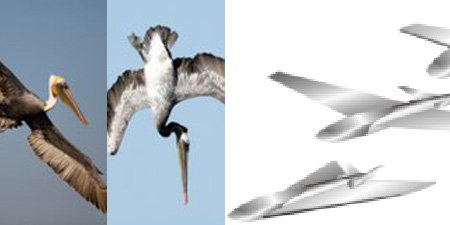High Resolution Images
054.R41. Morphing Systems. Rover

The desire for multi-mission capability in military and civil air vehicle systems has created a need for technologies that allow for drastic wing shape changes during flight. Since most current aircraft are fixed-geometry, they represent a design compromise between conflicting mission segment performance requirements, such as high-speed cruise, low-speed loiter, and low turn radius maneuver. If a hybrid aircraft is designed to combine several flight profiles, the wing design must maximize overall efficiency of the anticipated mission. Through morphing, the aerodynamics of the aircraft can be adapted to optimize performance in each segment by changing areas such as the camber of the airfoils and the twist distribution along the wing.
Adapting the shape of wings in flight allows an air vehicle to perform multiple, radically different tasks by dynamically varying its flight envelope. The wing can be adapted to different mission segments, such as cruise, loitering, and high-speed maneuvering by sweeping, twisting, and changing its span, area, and airfoil shape. Morphing wing technology is considered to be a key component in next-generation unmanned aeronautical vehicles (UAVs) for military and commercial applications.
CRG successfully demonstrated the self-deploying capabilities of its Veritex™ (Veriflex®-based composite) material in the fabrication and deployment of a sub-scale, carbon fiber reinforced wing. The sub-scale wing was heated, collapsed, and rolled up into a tight package. Once cooled, the structure maintained the rolled up configuration until it was heated and deployed to achieve the memorized wing shape, as shown in the center of the figure below.
>link















